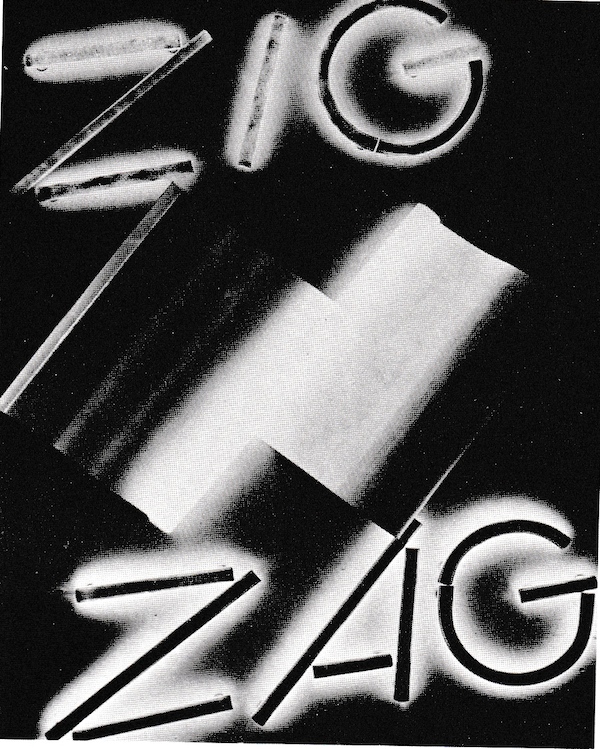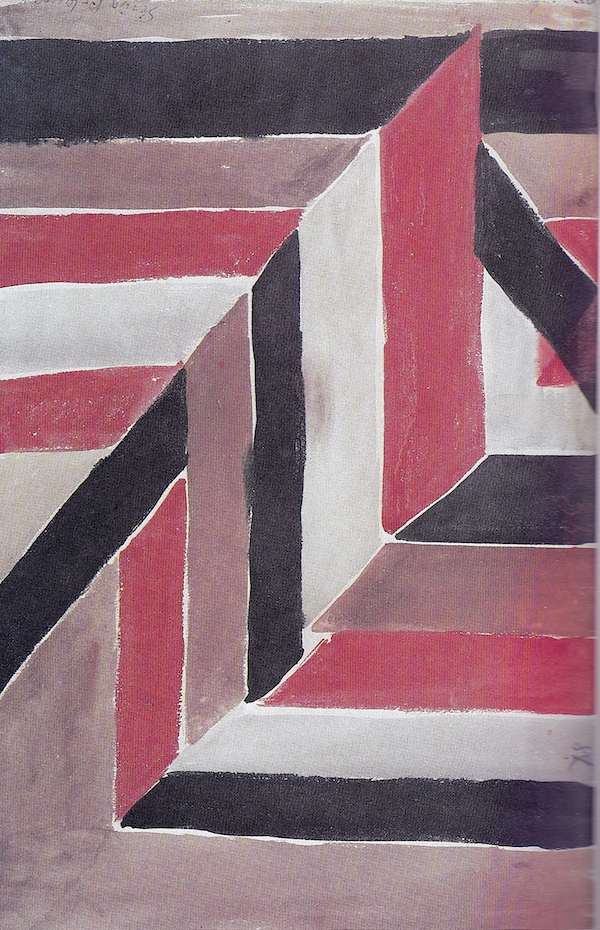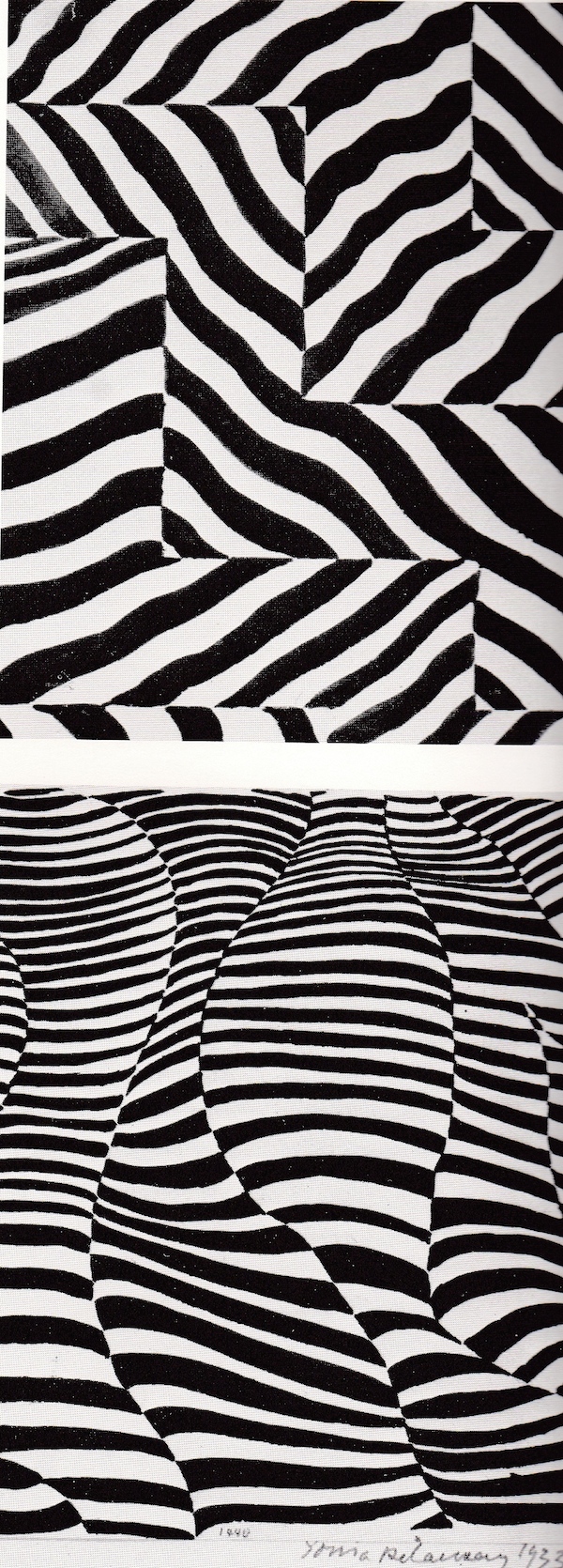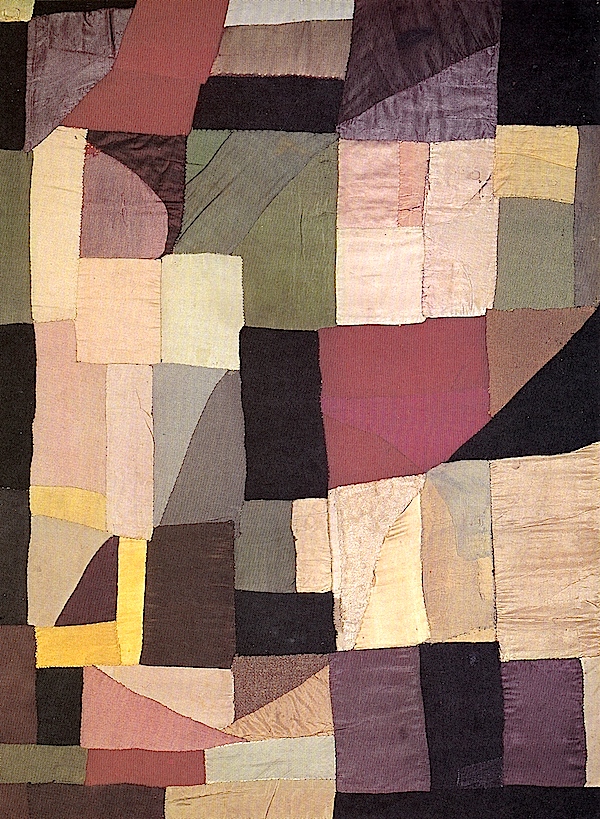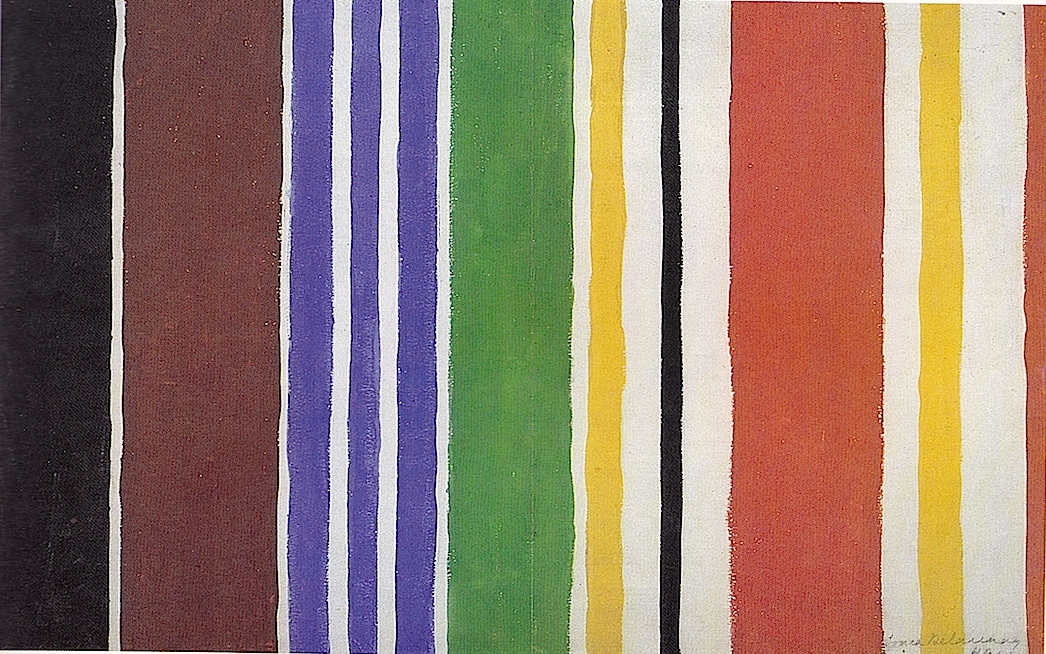June 2-9, 2019 ©Margaret Koscielny
As is my wont in old age, surrounded by art books, 90+ degrees outside, heat index 102 degrees, bored by the continuum of relentless arguments between political irrationalities and climate anomalies, I cast my eyes on a 1980 exhibition catalogue about the artist, Sonia Delaunay, standing proud on my library shelf.
Refreshed by the images which date from the early 1900s, I was jolted by analogies with the work of Frank Stella and even Gene Davis in designs she created for textiles and paintings. There was a design she executed for a neon sign in Paris using a new technology for the first time (1936) which seemed a direct inspiration for Keith Sonnier’s neon pieces and Bruce Nauman’s flashing neon messages. “Zig-Zag” was her title for the sign, and it called to my mind the word play that Nauman engages in, for example, in a piece ensconced on a corner edge of the Baltimore Museum of Art.
Sonia Delaunay provided the seed: As usual, the men “ran” with it. (And, maybe, at times, her husband?)
Beginning with a spontaneous appliqué for her baby’s blanket (which is almost a“precursor“ for some of Paul Klee’s “looser” quilt-like paintings), her collages, her designs for Diaghilev’s ballet productions, and the stunningly original geometric configurations which outright point to Frank Stella’s work from the 1960s and 1970s (those white lines between colours, even), Sonia Delaunay’s oeuvre seems ready for a reappraisal in light of her influence on mid-late 20th century art. And, how authentic it is.
It would be revelatory to see her work, now, in an exhibition showing her influence on the men and women who followed her. (Consider Birgit Riley’s striped paintings from the 1960s, for instance.) An astute art historian would find so much more.
Regarding the current art scene, I rely on internet art news and some opinions of New York curators of my acquaintance. It seems to me from this distance, contemporary art is bogged down in regurgitating Dada, mid 20th century installation-performance spectacles, with heavy reliance on “process” art, experimental television, and “cybernated art,” with giant video expositions on global environmental and political affairs. Except, the work is so OUTRAGEOUSLY LARGE, requiring museums to keep designing even bigger spaces to match ego-driven events, funded by Oligarchs of all sizes and persuasions. It pretends to care; it sensationalizes, instead.
The means of making art is as important as the ideas embedded in the means. Currently, “art” looks so much alike. Originality is lost in the race to Celebrity and Monetary Reward.
There was an argument made by a scholar from Columbia University that “Art is dead.” This was in the late 1970s or early 1980s. This was about the same time that an influential historian wrote a book with the title, The End of History. [He later wrote, as a member of the Bush Administration, the legal justification for torturing terrorists captured in Afghanistan.]
Since “God [was] dead,” ca. 1969, I guess we should not now be surprised that the “Earth will be dead in 2050.” Or, at the least, that such an announcement would discourage creative people from coming up with solutions to prevent such a thing.
Well, Professor Fukuyama was wrong about History. Professor Danto was wrong about Art, and, I am quite certain that whatever God is, the Universe is here to stay for some time to come.
So, I propose that artists direct their energies, not to copping past fears, but to solving our social, political, and especially, environmental problems. Refraining from excessive energy drain on the electrical grid with HUGE video and television screens, eschewing global jet travel from art fair to art fair to museum opening to museum opening, and proper disposal of the garbage which they have generated by trying to outsize the next artist’s work might be a place to begin to re-think how, and why, we make art in the first place. (Anselm Kiefer bragging he could paint a picture of unlimited size–of course: But, why?) Let Hollywood make the colossal, the spectacular. And, let me remind you all, that the most powerful works of art are, many times, the smallest on a museum wall.
(Here’s looking at you, Dürer, Vermeer, Watteau, Naum Gabo, Malevich, Braque, Picasso et al.)
Oh, and one essay by Thoreau is worth more than all the Twitters and blogs in cyberspace.
And, one more thought, by way of Nathan Milstein–all those great Russian Jewish violinists of the late 19th and early 20th centuries? The violin was small enough to carry, as you are running from pogroms when you have to leave the country in a hurry. (And, you could earn money playing it when you arrived at where you felt safe.)
Make great art that is small enough to fit in a human hand. Now, that’s a challenge.
PostScript: I do sound curmudgeonly, don’t I. The truth is, I am hopeful about artists of the next generation; the younger ones marching for the environment, registering to vote, and engaged in repairing the failures of past social policies. They use their feet, ride bicycles, eat wisely, and are kind to old ladies, such as I. Some of them, can even draw with their own hands! Imagine that!
